Far more than the sum of its parts, Royal Enfield’s all-new Bullet 350 is as significant as it is capable
It took me a second to realise the car turning right in front of me wasn’t going to stop. I brake hard, swerve heavily to the left and instinctively raise my right leg as if able to stop a moving vehicle with my shin. The front corner of the car brushes my leg as I somehow make it past, but before I can exhale, the Royal Enfield 350 Bullet drops into a deep pothole large enough to accomodate my front and rear wheels before violently bouncing back out. My ears are filled with a cacophony of horns and adrenaline is flowing.
I’m riding in Chennai, a city in India with a population of 12 million people and the place Royal Enfield has called home since 1955. I brake and tuck in behind a couple of scooters just as a beaten-up bus forces its way towards us and passes, horn blaring. The road straightens, I catch my breath and drop a gear because, as they said in the pre-ride briefing, I need to keep up or I’ll get lost.

With the engine spinning faster, I start planning my path forward on the overcrowded road punctuated with feral dogs, tuk-tuks, craters and zero road rules. I spot a gap and accelerate assertively as I execute my plan, my eyes out on stalks scanning for immediate danger. The fact that the bike only has a handful of kays on it as I navigate my way through this perilous environment speaks volumes. The fact that I’ve only travelled a handful more on it and I’m literally trusting it with my life speaks even more.
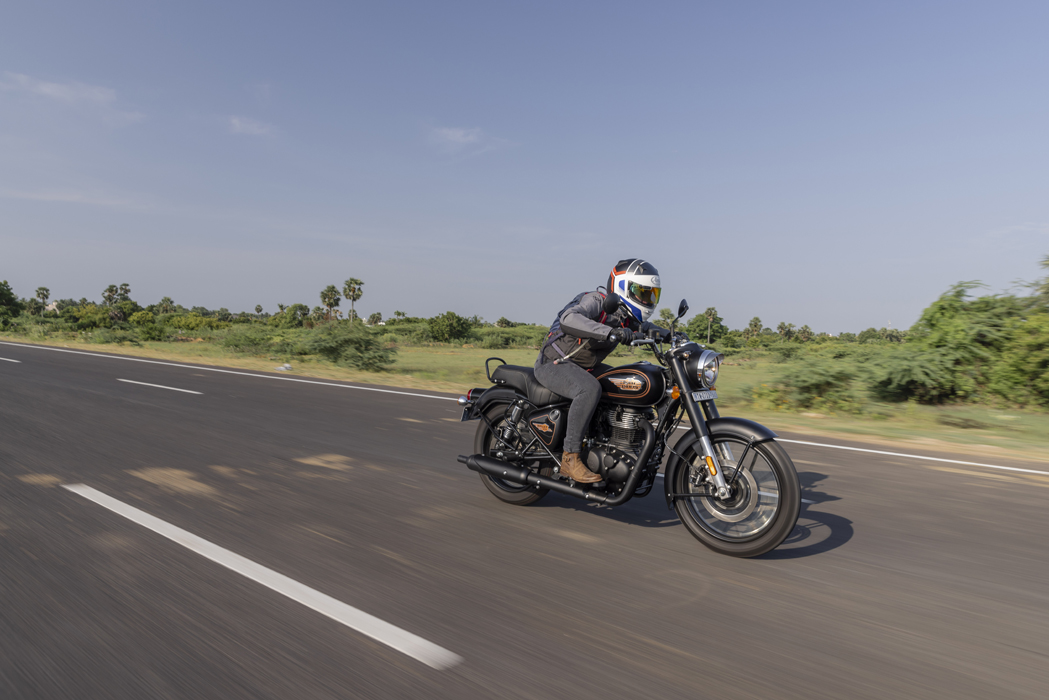
The group turns off onto a dirt road, it’s heavily potholed and clearly never been maintained. Picking our way around the deep washouts while dodging oncoming traffic, cow shit, sharp speed humps, star-struck kids who want to high-five you… hang on, was that a monkey?!
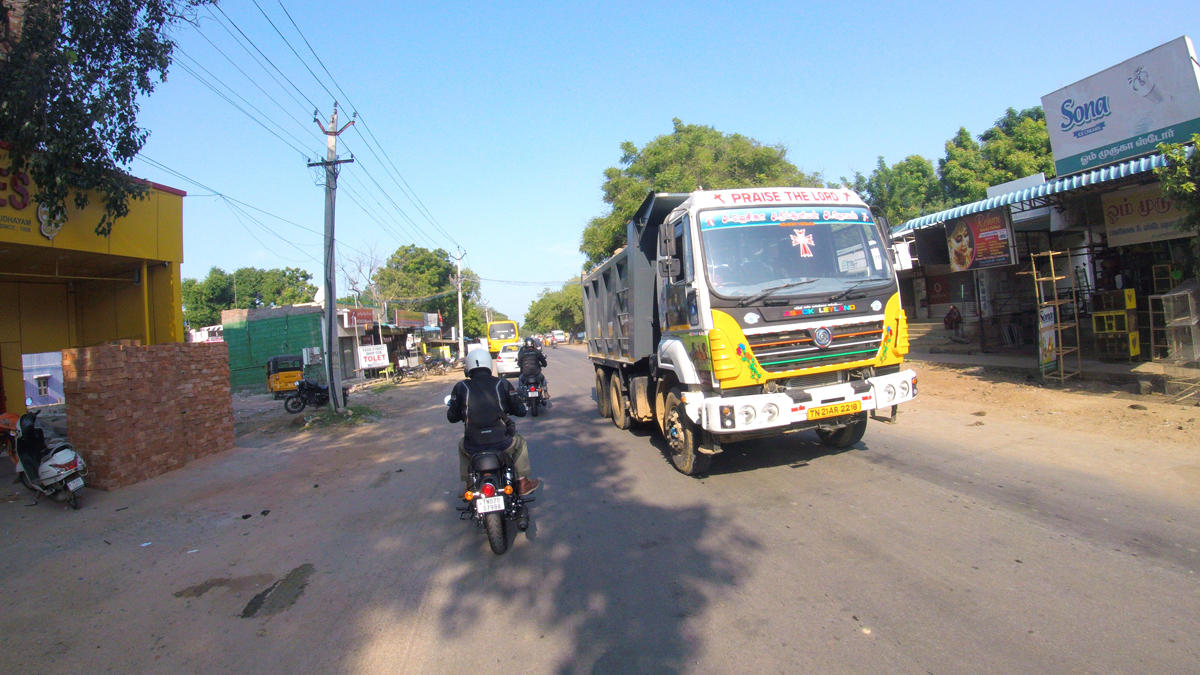
I realised I’ve lost sight of the rider in front, I stand to take the hit out of holes I really should be rolling slowly through, but I brace and accelerate so as to not get lost. As if by muscle memory, the bike just takes the whole melee in its stride, remaining stable and composed as the Aussie riding it bounces about in a mild state of panic on top.

There’s some remnant tarmac, a sharp left, a 90-degree right and I only spot the piles of gravel in the final moments. I dab the rear brake, make a quick desperate input into the handlebar and the bike rolls confidently through what must have only been a 15 centimetre gap in the debris. I look in the mirror amazed I made it through. The bloke behind me wasn’t so lucky…
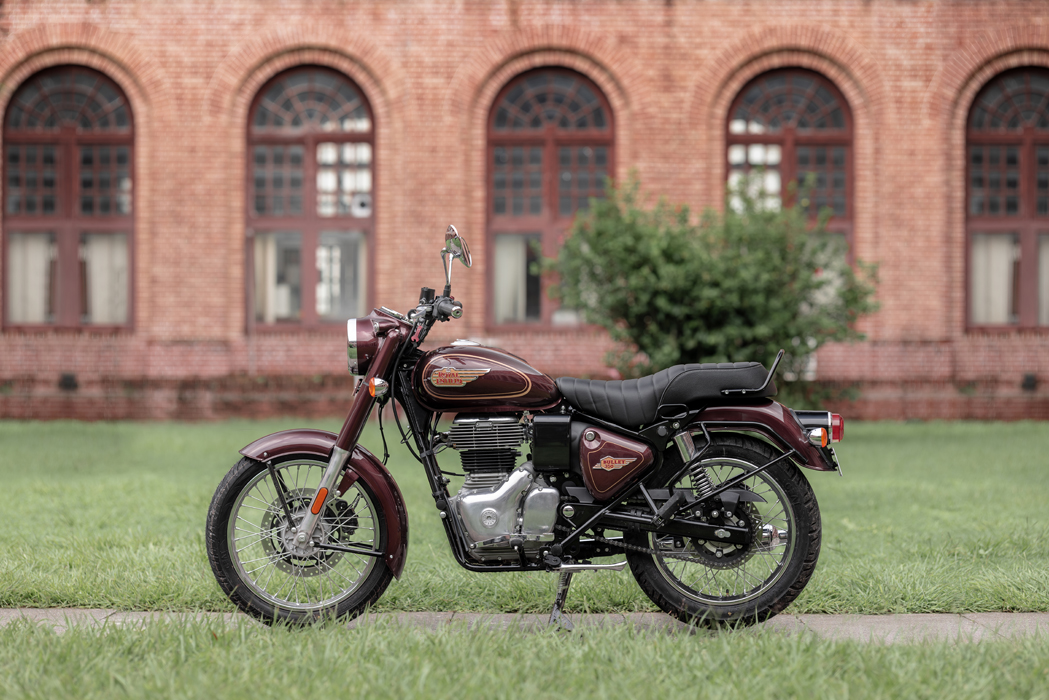
As well as a bit of luck, that surprising precision probably has a bit to do with the 2023 Bullet’s new chassis which is the same all-new twin-downtube cradle unit found in the firm’s Meteor and Hunter 350 models. And like all new chassis that have rolled off Royal Enfield production lines in recent years, it’s carefully considered and well executed.
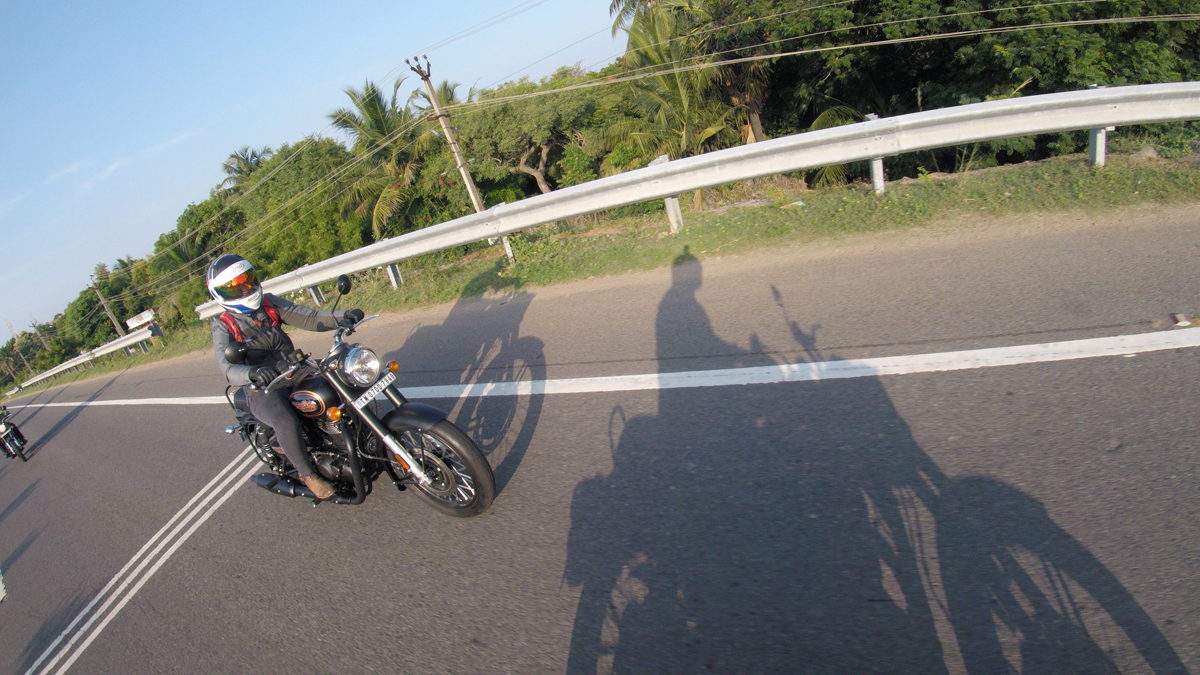
I catch up to the group and take a moment to catch my breath. I’m now on the back wheel of Brit Mark Wells, Royal Enfield’s Chief of Design. On the approach to every speed hump – and there’s a lot – he stands on the ’pegs, bounces his weight to compress the suspension before launching off the humps and landing two-wheel bunny hops. It’s amusing, but also indicative of the belief he has in the bike’s build quality.
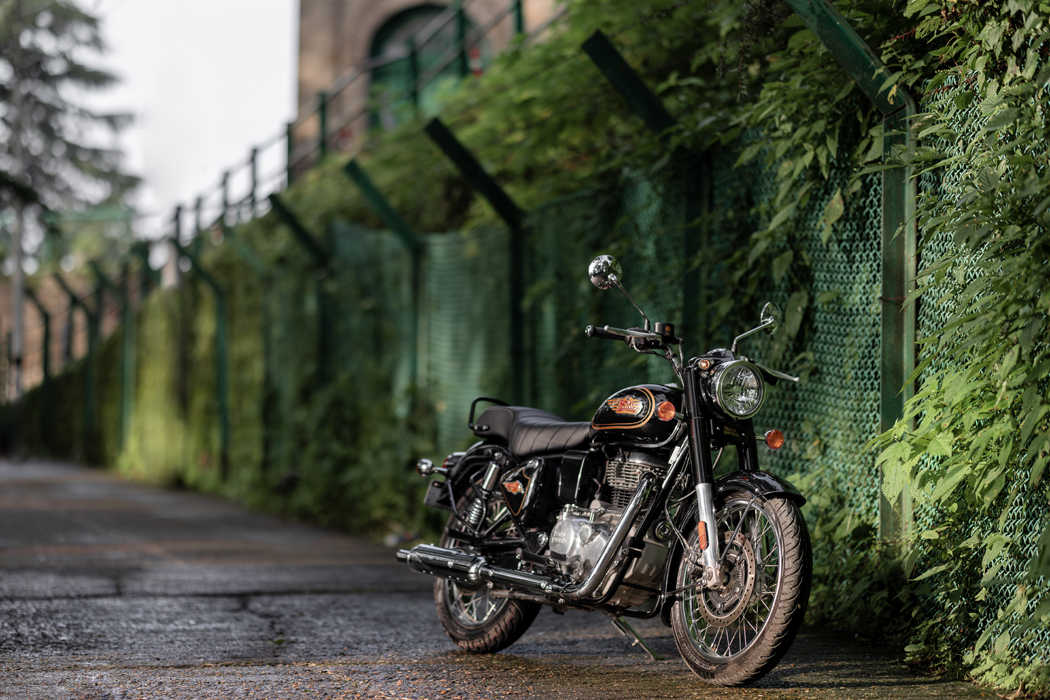
The pace quickens again and the 349cc single relishes the opportunity – in this environment, the 27Nm of torque and 15kW of power is ample and the bike’s 195kg of heft means it’s stable, planted and predictable. There are sections where I have no choice but to raise my bum slightly off the seat and use my legs to absorb the hit of a hole, hump or hairy section. It’s frantic, loud and crowded – it’s everything the Bullet isn’t.
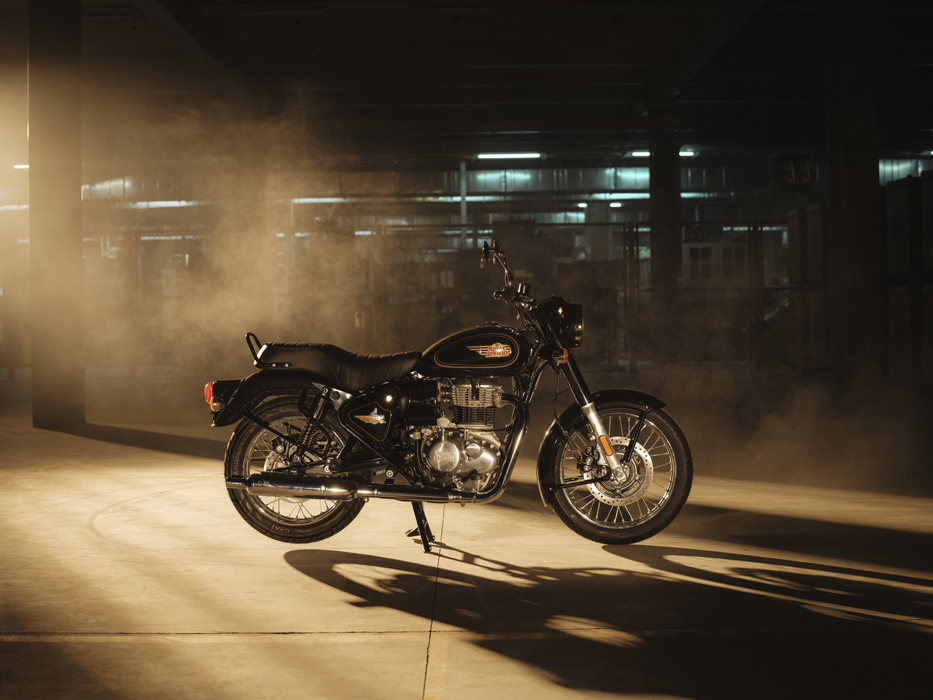
The engine, which is the firm’s latest Euro 5-compliant J-series unit, is matched to a five-speed gearbox whose ratios, again, are perfectly matched to this environment. First gear is really low, best used for the hairiest of sections or the most choked of heavy traffic, both of which there are plenty in India’s second-most populous city. Fifth, likewise, is an overdrive ratio, saved only for higher-speed transport sections along multi-lane highways… not that you can afford a lapse in concentration, even six-lane highways with a divider down the middle means which side of the road one chooses to use is merely suggested – I encountered a bus-load of people barreling towards me on my side of the highway.

Second, third and fourth gear is where it’s at for 90 percent of the time, on these types of roads anyway, and the spread of usable power and torque means you’re rarely looking for anything more as you chug your way through the landscape. And that ‘chug’ is something Royal Enfield is really proud of – the beating single-cylinder heart is what this motorcycle brand was built on.

The Bullet is the world’s longest running motorcycle in continuous production and you can’t help but feel its significance of not only what it represents to this historic brand, but what it has meant to the countless Bullet owners over the past 91 years, and indeed what the Bullet represents to motorcycling itself.

As I start to settle into my surroundings I can begin to afford to turn some of my attention to the bike beneath me. Undeniably Bullet, I’m met with a cockpit that isn’t dissimilar to the very first Bullet built in 1932. Built into the housing of the large round headlight is a circular analogue speedo flanked by the small iconic parking lights referred in this part of the world as ‘tiger eyes’.

Beneath the speedo sits a relatively modern LCD screen displaying the fuel gauge, a single trip meter and an odo. To the left of the screen is the ignition and to the right a blank where the firm’s Tripper turn-by-turn navigation unit would sit if it was included on the bike. Whether or not the Tripper function will be fitted as standard when the bike hits Australian dealerships later on in the year is still unknown.
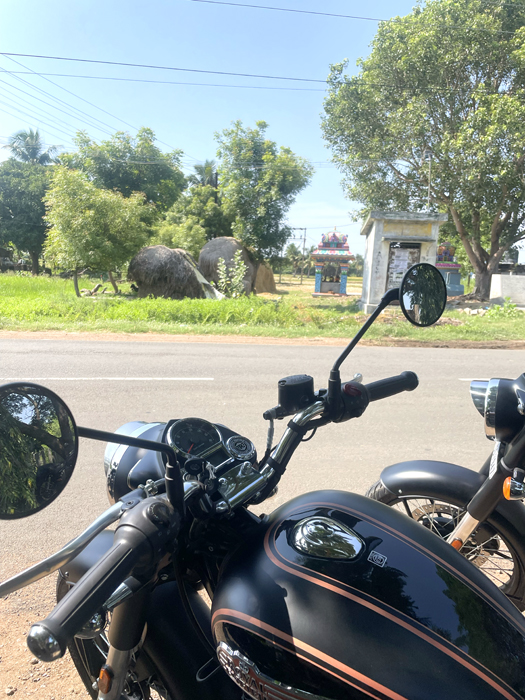
Because of the state of the roads, it occurs to me just how well padded and well thought out the design of the seat is. Plush but supportive, wide yet narrow where it matters and, like nearly every Bullet in the nine decades before it, features the stepped height difference between the rider’s and pillion’s perches. In fact, it doesn’t take me long to realise that more often than not, I can simply stay seated and let the astonishingly good seat absorb what I’ve been asking my legs to do for the last 30 minutes or so.
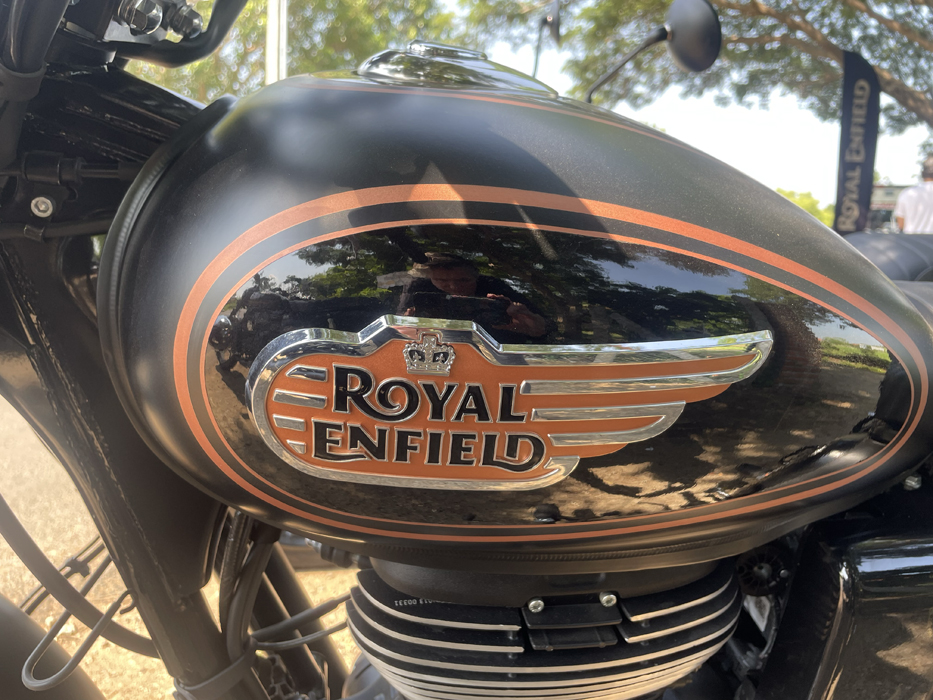
Directly below the seat is a pair of wide rubber footpegs which, combined with the relatively narrow but relaxed handlebar makes for comfortable all-day ergonomics. The bike I’m riding has a heel-toe gearshift, though I doubt that feature will make it to the Australian-delivered bikes, while the brake pedal on the right-hand side sports a wide rubber cover which I’m grateful for – I don’t need to be taking two dabs at the brake in these kind of conditions.
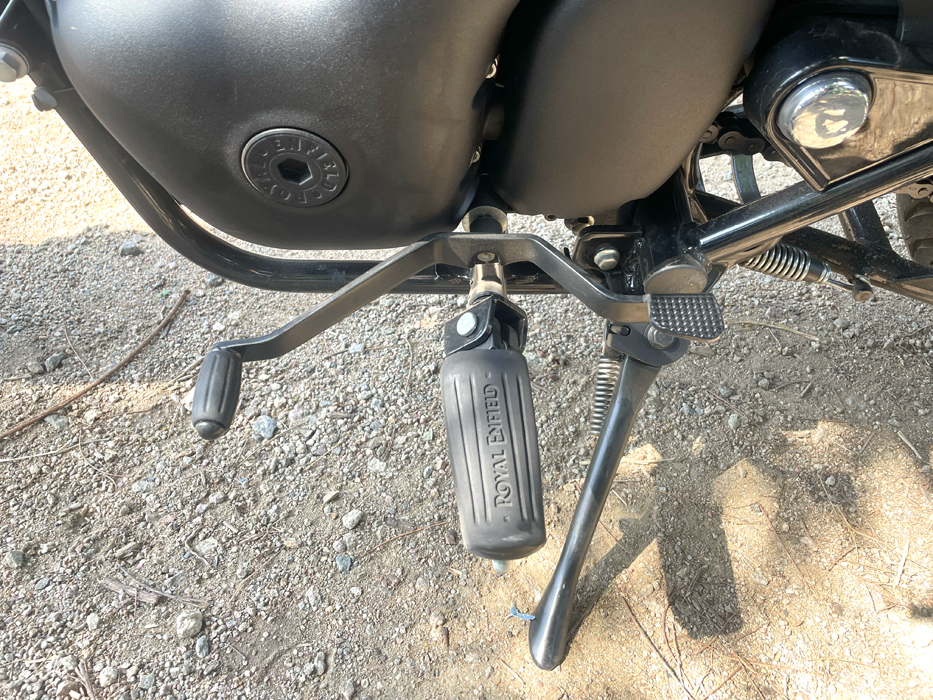
Speaking of brakes, given how few kays the bike had on it before I rolled out into the fracas that is Indian traffic and I’m still alive, they’re very good. Decent bite and feel, as well as power, all of which will presumably improve as they bed in with more use, too. But that’s what we’ve come to expect from Brembo’s Indian manufacturer ByBre who has supplied the dual-channel-ABS equipped system on the Bullet 350. Just as it is on the firm’s latest Hunter 350, the package consists of a 300mm disc gripped by a twin-piston caliper matched to a 270mm disc at the rear with a single-piston caliper. It’s not fancy, but it works.
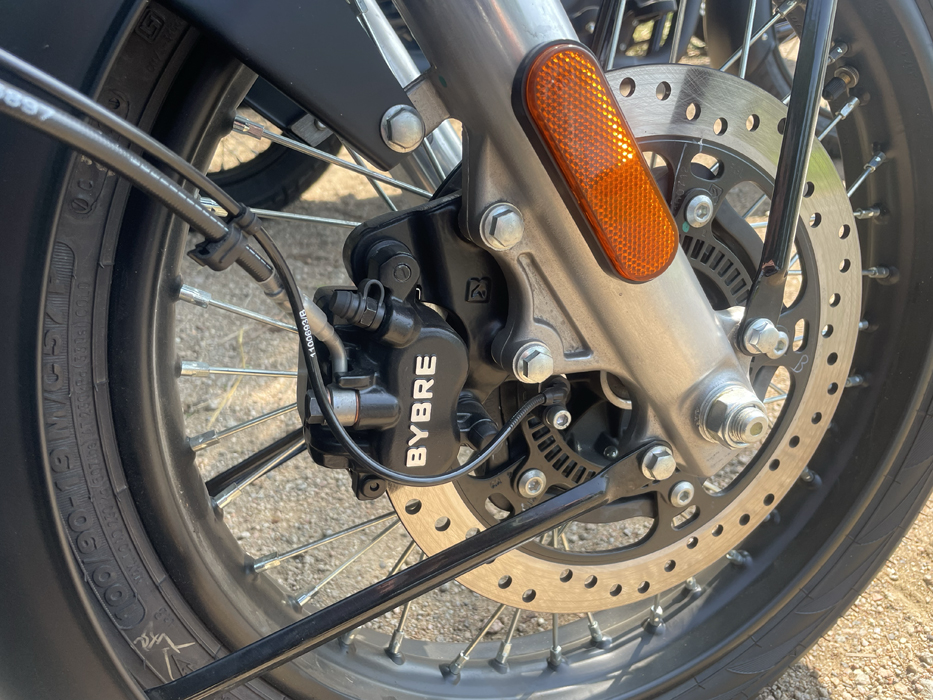
And the same can be said for the suspension. With no fiercer test of the conventional non-adjustable fork and dual six-step preload adjustable rear shocks than the roads in Chennai, the units chosen and their factory settings performed beautifully with everything my 64kg frame asked of them. Helping navigate the
unique terrain, of course, is the 19-inch front and 18-inch rear wheels shod with narrow 100/90 and 120/80 profile tyres respectively. The larger diameter hoops are useful for climbing out of crater-like potholes, and the highest speed I saw all day was a brief 120km/h, so the notion of ‘lazy steering’ due to the larger diameter front wheel isn’t an issue.
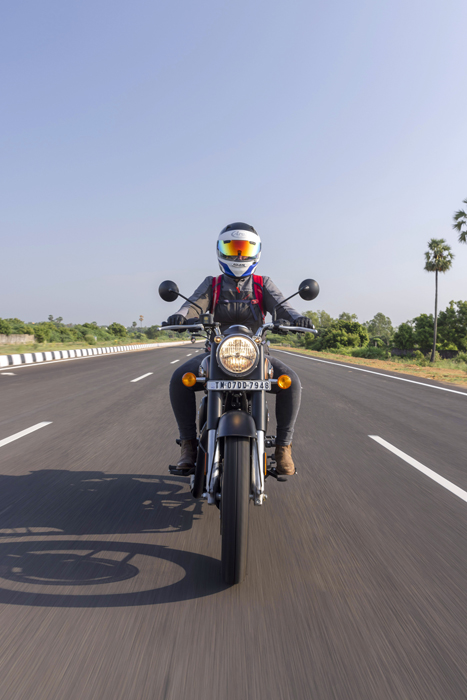
But really, lazy steering is what this bike is all about, now and in the 90 years of its existence. Its vintage styling remains true to even the first 1932 Bullet. As well as the stepped seat, the new model features the side-mounted peashooter exhaust, the long front guard that extends down below the engine, the beautifully integrated headlight –
even the small chrome visor over the light on the top-tiered Black Gold model. It’s what Royal Enfield calls an iconic silhouette and I can’t argue with that.
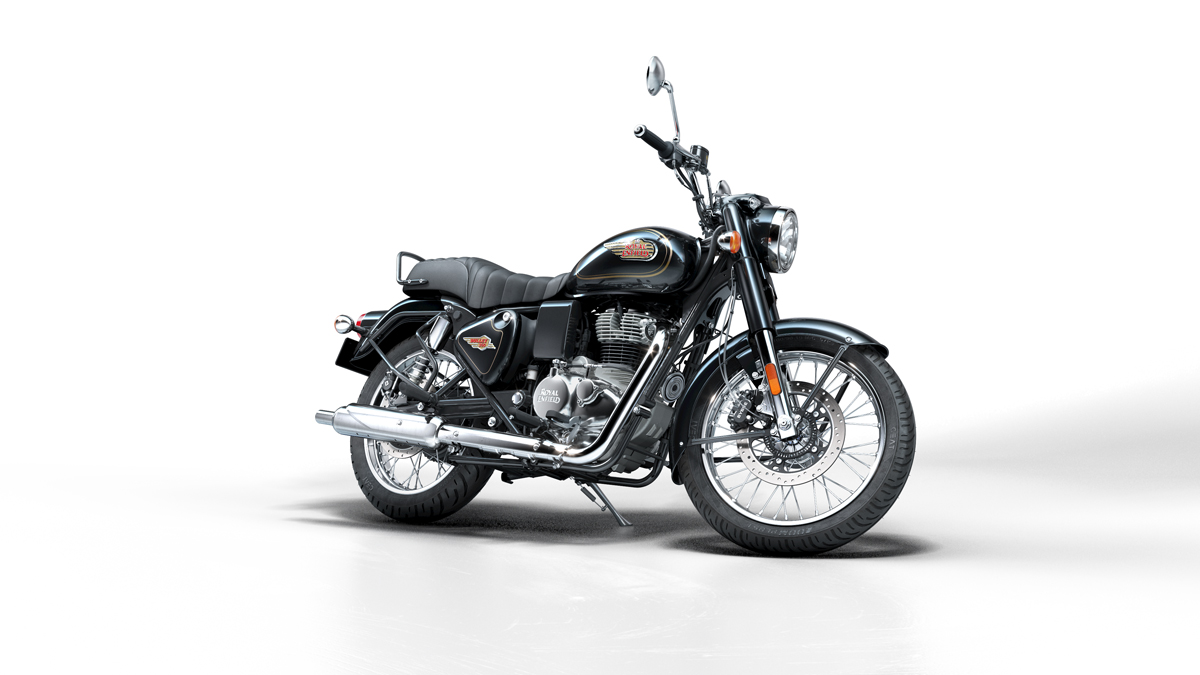
Mind you, there was nothing lazy about that morning dash to a teahouse on the outskirts of Chennai where we stopped for a quick bite to eat and to get some reprieve from the stifling heat. I could hardly believe the trip meter only read 44km – the perilous nature of India’s roads made it feel twice as far as that. But as I sipped on water and watched the rest of the traffic beep its way by, it became really clear that the Bullet 350 makes so much good sense in this environment.
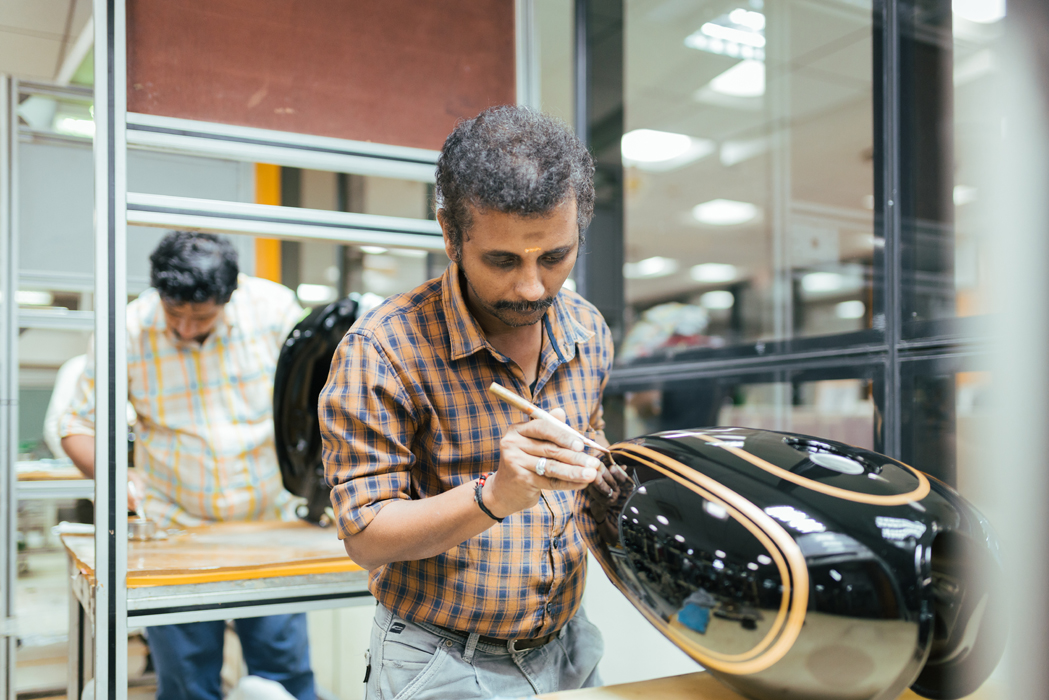
Royal Enfield has succeeded in creating a modern version of a historically significant model while staying steadfastly true to the legacy of one of the motorcycling’s icons.
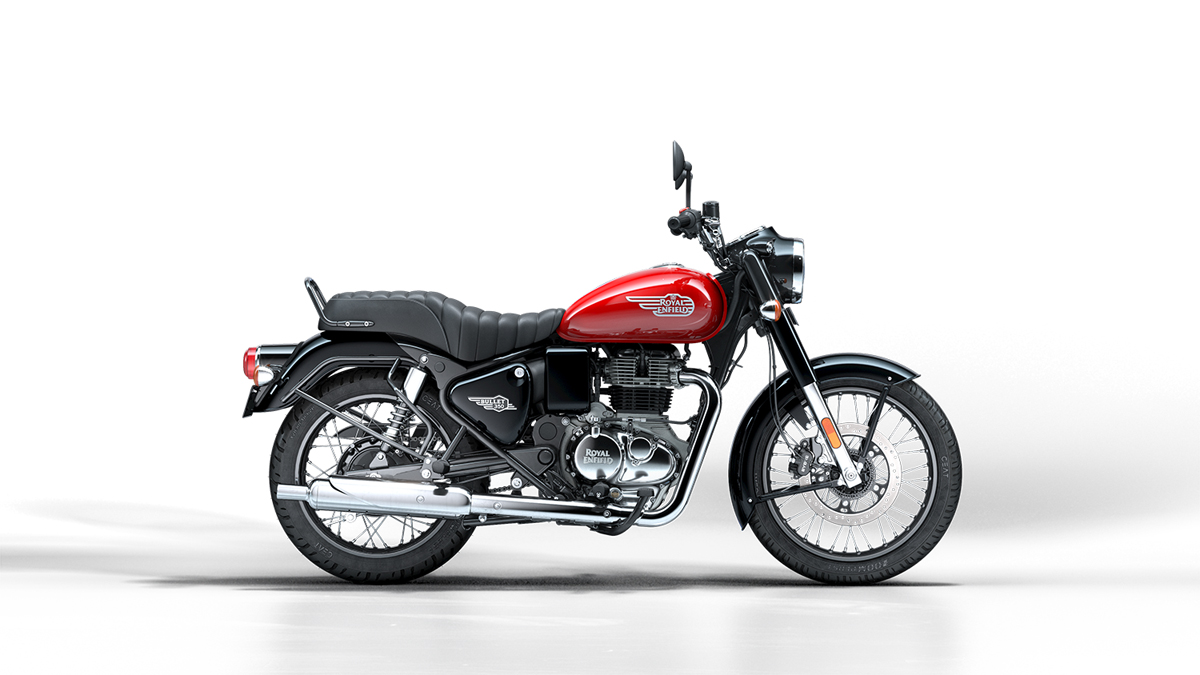
Knowing what I was in for, the ride back to the starting point was no less frantic than the ride there, but it was certainly less panicked. We swapped the dirt road for a highway blast and the not-yet-run-in Bullet was happy to sit on 120km/h, but there wasn’t a lot left past that. There might be a bit more once the engine frees up some more.
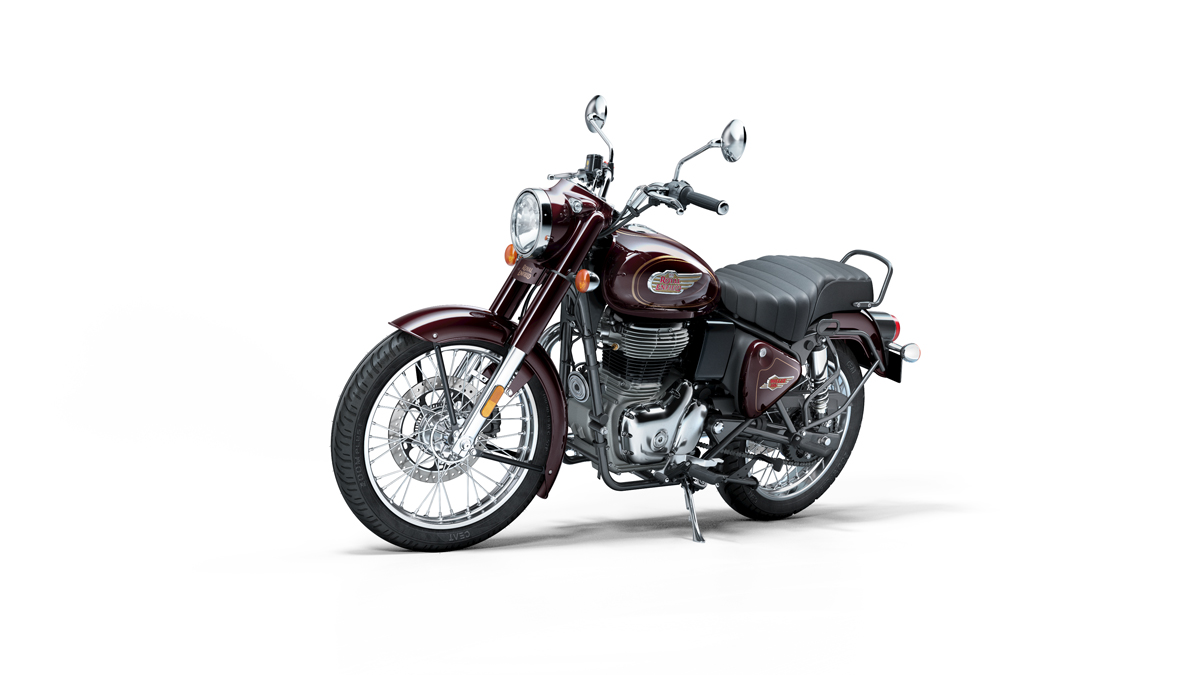
But really, if you’re complaining about the bike’s top speed capabilities, you’re missing the point of the Bullet 350. There’s a reason why Royal Enfield’s owner Siddhartha Lal rode a Bullet 350 to his wedding in 2014 and it had nothing to do with performance.
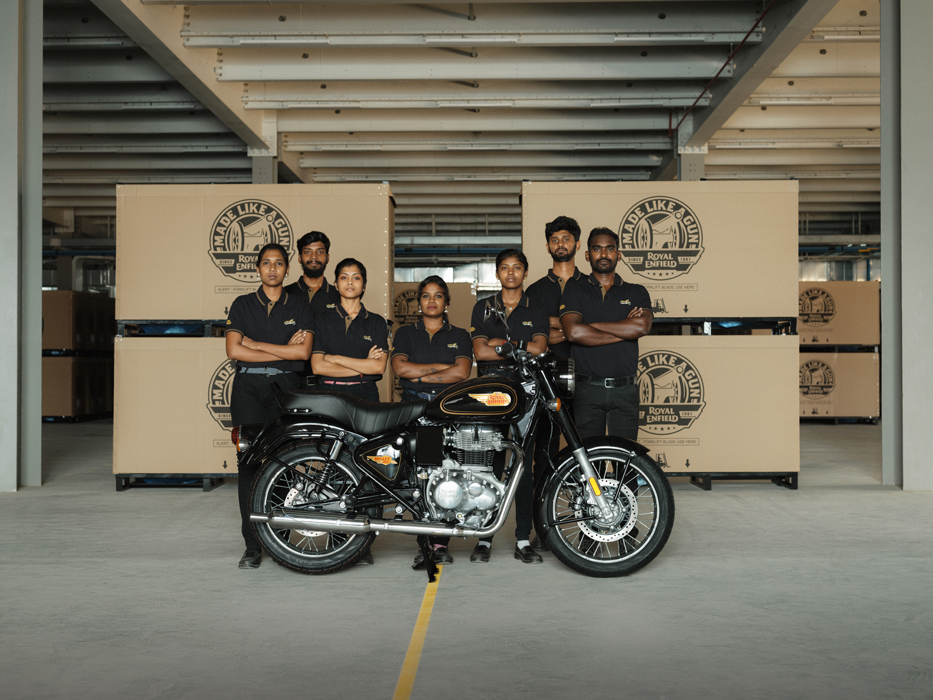
While remaining enormously popular in its domestic India during the last 91 years, it’s been over a decade since the Bullet 350 has been made available on the Australian market. And with bikes such as the laid-back Meteor 350 (from $8190 ride-away), the youthful Hunter 350 (from $7590) and the retro-styled Classic (from $7990) covering off most of the J-series 350’s market here in Oz, it’ll be really interesting to see how the Bullet is marketed to would-be Australian owners.

Royal Enfield’s Chief Commercial Officer Yaddi Singh walked up to me at the end of the ride, keen to hear my thoughts on the new bike and to quiz me on a price point I believe would work for the Australian market. The last time we’d spoken, I’d quizzed him on some of the rumoured upcoming models AMCN had both snapped during testing or had confirmed through type-approval documents (Royal Flush, AMCN Vol 73 No 03).
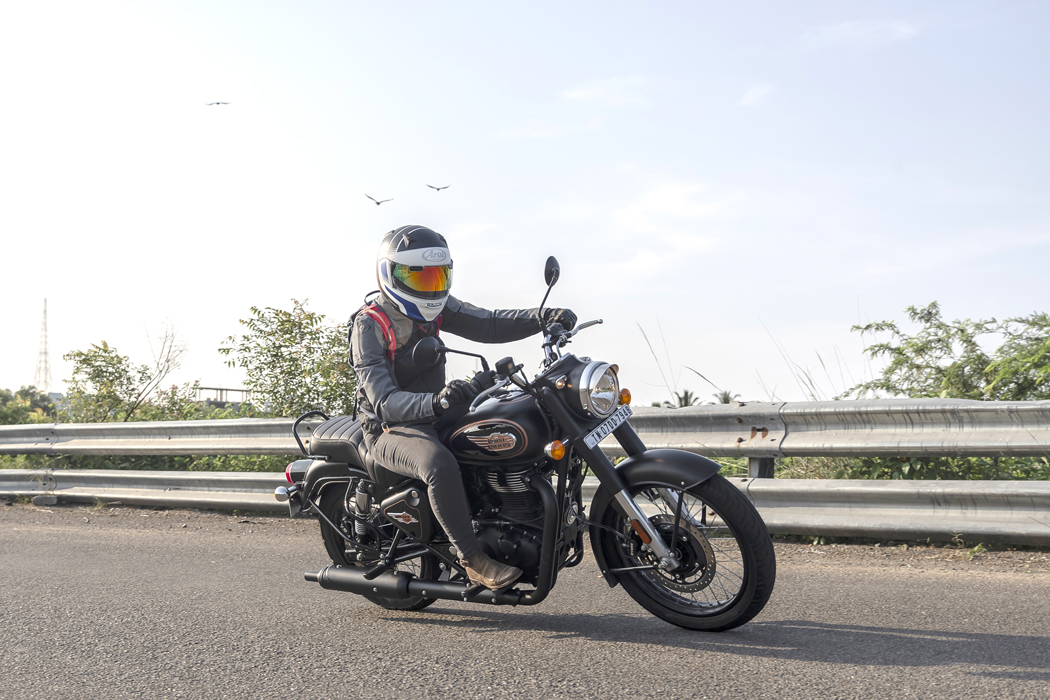
Protective of his future marketing strategy, he remained tight-lipped at the time and eventually made it clear he was growing pretty tired of my prying. So after a brief exchange about the brilliantly executed Bullet 350, I couldn’t help but enquire about the possibility of a new Bullet 500, which I believe may be well received in a fussy market such as Australia.
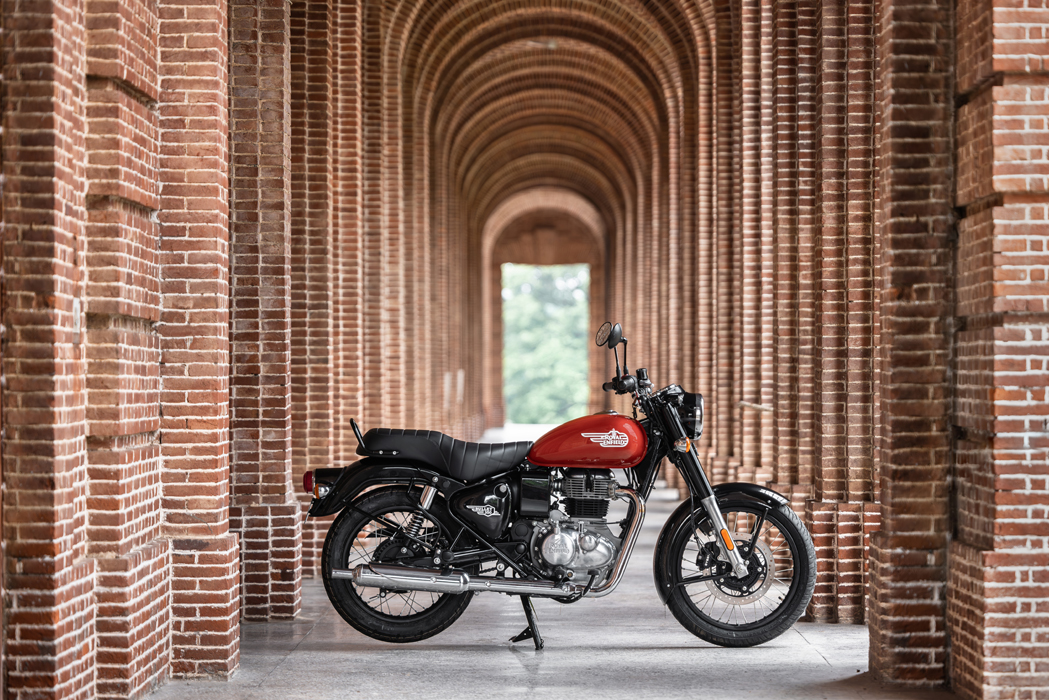
He turned on his heel and walked away, but not before I glimpsed a wry smile. Which may just suggest a bigger Bullet might also be in the works…
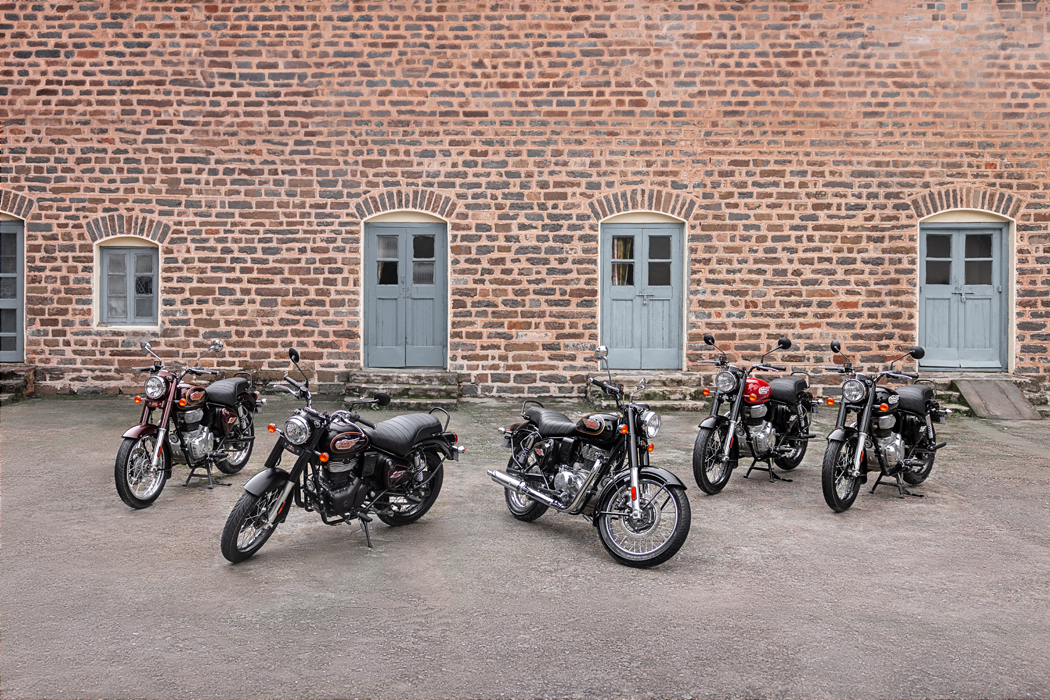
Test Kellie Buckley + Photography Royal Enfield